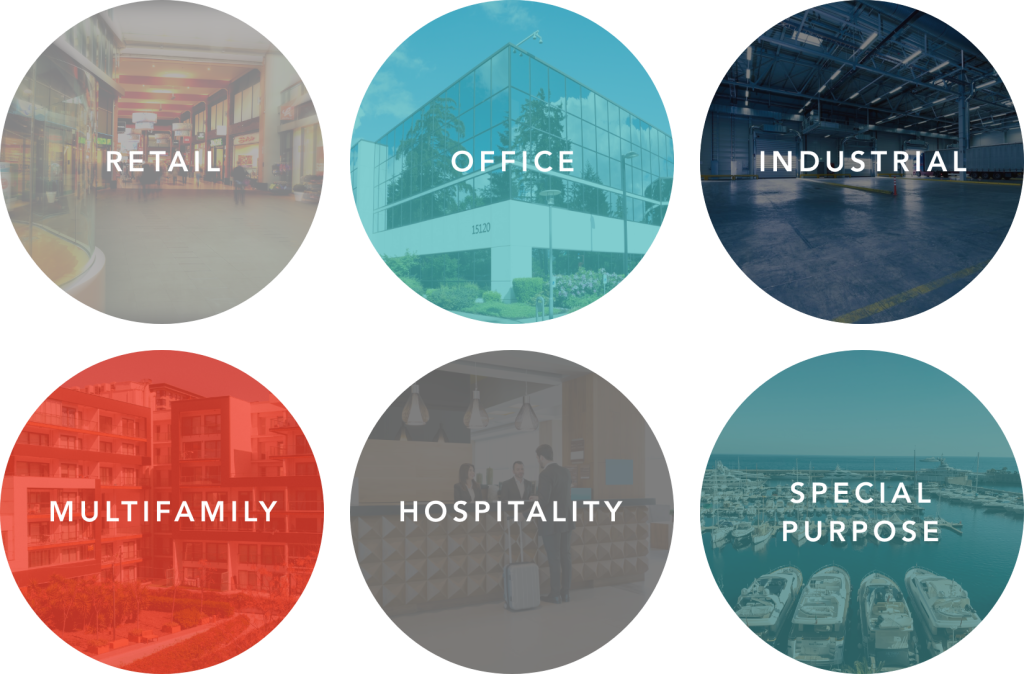At a Glance —
- Commercial real estate may offer many investors with smart alternatives to the stock market and public exchanges
- There are a variety of CRE asset classes to consider for your portfolio, all with varying performance considerations you should research to find the best fit and mix for your portfolio and investment goals
- CRE investments offer a wide swath of benefits. Among them — recurring rental income, appreciation in value, tax advantages from the asset’s depreciation and solid protection from inflation
Commercial real estate assets offer a variety of cash-flowing, asset-backed investments. Specifically, CRE assets generate returns from regular distributions as well as typically provide gains on the asset’s sale. Real estate has underlying value. Even if the business that sits on top of the real estate struggles, we still have the land and structures to fall back upon.
There are a variety of types of commercial real estate —

Learn more details about each commercial real estate asset class, here.
Benefits of having CRE investments in your portfolio.
1 – Rental income.
Owning a commercial real estate property such as a retail center, a distribution or industrial building offers the investors routine rental income from the tenant that occupies that property. The gain on the value of the underlying property when it is sold usually occurs years later. The rental income services the debt on the property and any expenses associated with that property, and the free cash flow is distributed to our partners on a quarterly basis.
2 – Property appreciation.
Our primary focus is to invest in significant real estate where the underlying value of the land will continue to appreciate over time. Investing in front of the path of growth helps property appreciate more quickly with the theory that more people tomorrow create more demand for goods and services in a submarket, and thus more tenants will want to be there. Whether it is a strategically located hotel or marina, or an industrial property in a distribution market, location is key. Location! Location! Location!
3 – Real estate depreciation offers tax advantages.
Another significant benefit of investing in commercial real estate is depreciation and the impact on an investors taxable income. Real estate depreciation is an income tax deduction that allows a taxpayer to recover the cost or other basis of a particular property placed into service by the investor. Depreciation is essentially a non-cash deduction that reduces the investor’s taxable income. This is sometimes referred to as a phantom expense because the investor is not actually writing a check — it is merely part of the tax law. The IRS allows investors to take a tax deduction based on the perceived decrease in the value of the real estate. Learn more about the tax advantages of depreciation here.
4 – Inflation protection.
Commercial real estate also can provide a good hedge against inflation. As countries like the US print money to stimulate economic growth, inflation occurs, and the price of real estate with high replacement costs will also increase accordingly. For example, if the costs of wood, steel, and labor go up, then the cost to build or replace a building will go up. And thus, the value of existing buildings will also go up as many investors and developers will invest capital into existing real estate rather than new construction. This trend will allow investors who already own real estate to protect themselves from this price increase and inflation by having their assets increase in value.
Bottom Line —
While commercial real estate investments carry some risk, the benefits and potential returns are considerable. With careful planning to understand the various asset classes and their specific performance, you will be able to target CRE assets that align with your investment goals and deliver considerable benefits. And results.
Invest in your future, today.
Are you an accredited investor ready to invest in commercial real estate?
Get Started